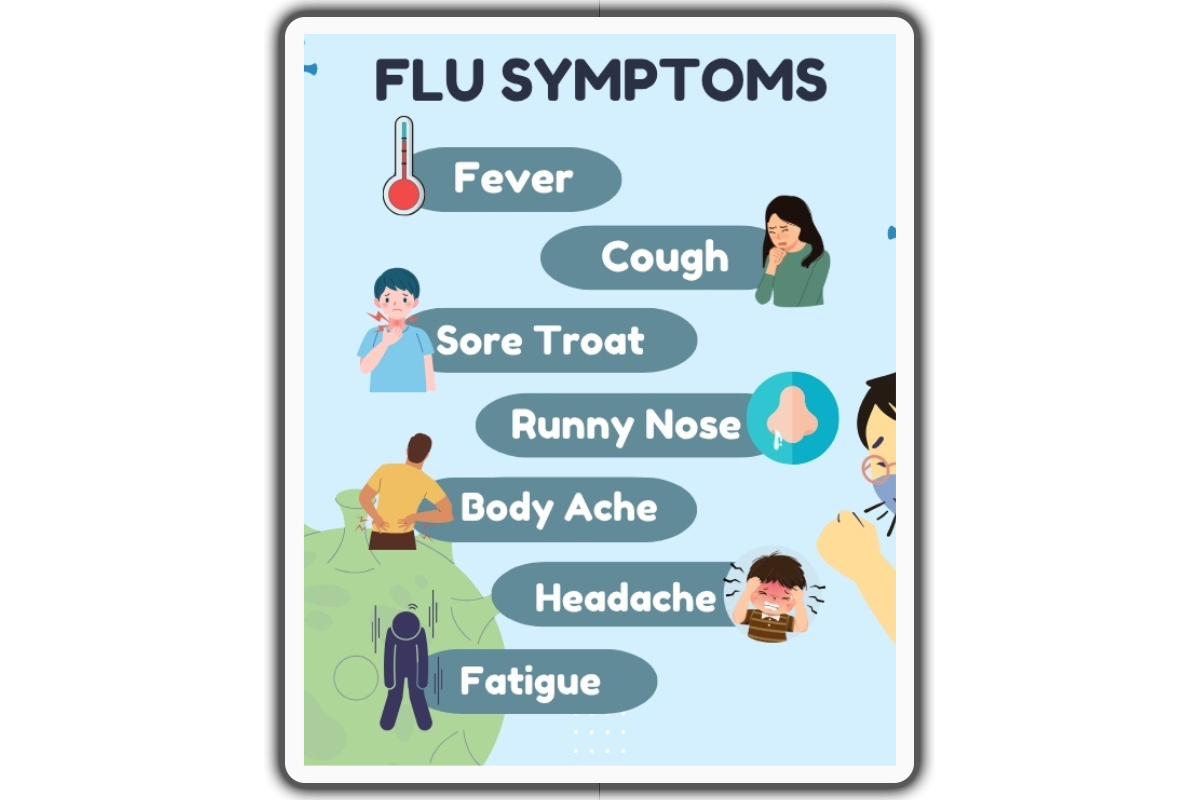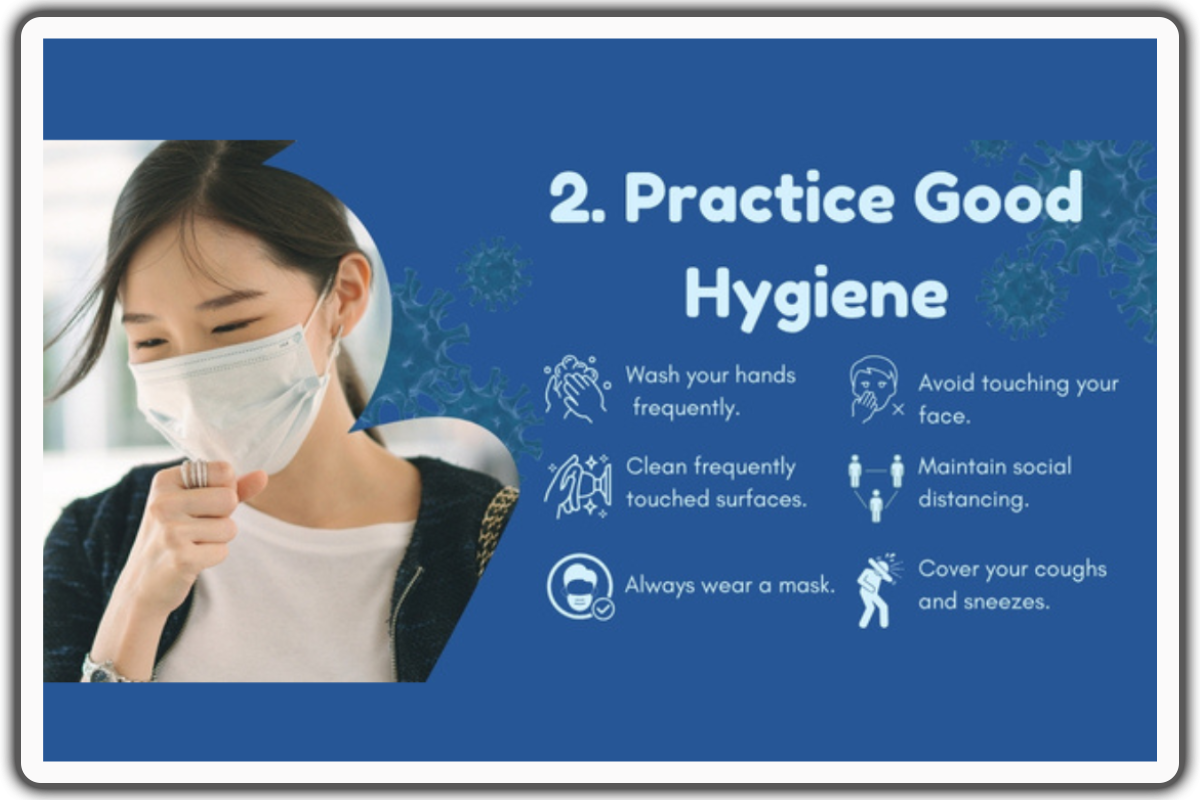Essential Flu Prevention Tips for a Healthier Season
Flu season always seems to sneak up on us, doesn’t it? One moment it’s crisp autumn air, and the next, you’re surrounded by sniffles, sneezes, and that dreaded sore throat.
Influenza, or known as the flu, is a contagious respiratory illness that impacts nearly 8% of the U.S. population annually, according to the Centers for Disease Control and Prevention (CDC).
In fact, seasonal influenza leads to an estimated 650,000 deaths worldwide each year, according to the World Health Organization (WHO).
I’ve been caught off guard by the flu virus before, and let me tell you—it’s not fun.
That’s why this year, I’m all about focusing on simple flu prevention tips to keep my family and me healthy. Let’s dive into some practical, easy-to-follow strategies to stay ahead of the seasonal flu!
Understanding the Flu
Common Flu Symptoms
Flu symptoms often hit suddenly and can leave you feeling miserable. Watch out for fever, cough, sore throat, runny or stuffy nose, body aches, headaches, and extreme fatigue. I’ve had those days where every muscle feels like it’s been through a workout—classic flu! Recognizing these signs early can help you act fast.
Cold vs. Flu Symptoms
It’s easy to mix up cold and flu symptoms since they share some overlap, but there are key differences. Colds usually come on gradually with milder symptoms like sneezing or a runny nose, while the flu tends to strike quickly and more severely. Identifying the difference helps you decide whether to rest at home or consult a doctor.
Types of Flu
- Seasonal Flu
This is the most common type of flu that circulates every year during flu season. It’s caused by influenza viruses, primarily types A and B, and can range from mild to severe. - H1N1 Flu (Swine Flu)
First identified in 2009, this strain of influenza A caused a global pandemic. It’s now part of the seasonal flu mix and is covered by the flu vaccine. - Avian Flu (Bird Flu)
A rare type of flu that spreads from infected birds to humans. It’s not common in everyday life but can cause severe illness when it occurs. - Influenza A
This type is known for its ability to mutate, leading to new strains that can cause widespread outbreaks. It’s responsible for most flu pandemics. - Influenza B
This type of flu is typically less severe than influenza A but still causes seasonal flu outbreaks, particularly in children and younger adults. - Influenza C
A milder form of the flu that doesn’t usually lead to widespread outbreaks. Most people recover quickly without severe symptoms.
How the Flu Spreads
The flu virus is sneaky, spreading through droplets when people cough, sneeze, or talk. It also lingers on frequently touched surfaces like door handles and phones. That’s why I always remind my kids to wash their hands and refrain from touching their noses and mouths. It’s a simple step with big prevention power!
The Importance of the Flu Vaccine
Getting a flu vaccine is one of the best defenses against the flu during flu season. It doesn’t just protect you but also those around you, especially those at higher risk of severe illness. I make it a priority for my family each year—better a quick flu shot than a week in bed, right?
Proper Flu Prevention Practice
1. Get Vaccinated with the Flu Vaccine
Getting the flu vaccine every year is your best defense against seasonal flu and its complications. It’s a small effort that makes a big difference in staying healthy during flu season.
The vaccine is specially formulated each year to protect against the most common influenza viruses expected to circulate. By getting vaccinated, you’re reducing your chances of getting sick and helping to limit the spread of the flu virus in your community.
There are several vaccine options to fit different needs, from traditional flu shots to nasal sprays and high-dose vaccines for older adults. No matter your choice, the key is to make vaccination a priority.
2. Practice Good Hygiene
Good hygiene is one of the easiest flu prevention tips to follow daily.
- Wash your hands frequently: Always disinfect by washing your hands with soap and water, or use an alcohol-based hand sanitizer if soap isn’t available.
- Clean frequently touched surfaces: Regularly disinfect items like phones, faucets, doorknobs, and light switches.
- Avoid touching your face: Keep your hands away from your eyes, nose, and mouth to reduce the risk of spreading the flu virus.
- Practice social distancing: Stay at least 6 feet away from people who are sick or showing flu-like symptoms. Limiting close contact can help reduce exposure.
- Cover your coughs and sneezes: Always use a tissue or your elbow to cover your nose and mouth when sneezing or coughing to prevent the spread of germs.
- Always wear a mask: In crowded or indoor spaces, wearing a mask can help protect you and others from airborne germs, including the flu virus.
- Make hygiene a habit: Small steps like washing hands and disinfecting surfaces consistently can have a big impact during flu season.
3. Stay Healthy with a Balanced Lifestyle
A healthy immune system is your best defense against the flu. To build it, make sure you’re getting enough sleep, staying active, managing stress, drinking plenty of fluids, and eating nutritious food.
"Sleep helps optimize and regulate our immune system. If we do not have adequate sleep, our immune system is less prepared to fight illness."- Dr. Teresa Hardesty, Internal Medicine Physician.
https://youtube.com/shorts/ksZCXNX20Fg?si=HKkVp7gDPA5zZwYD
I’ve noticed that when I’m consistent with these habits, I feel more energized and better equipped to fight off illness.
Practicing these healthy habits becomes even more important if you’re at higher risk of severe illness, such as pregnant women or people with chronic medical conditions.
Staying active, eating well, and managing stress can help reduce the risk of complications during flu season. Simple lifestyle choices can go a long way in keeping you and your loved ones healthy and flu-free!
4. Take Vitamin C for Extra Immunity Support
Vitamin C is a powerful ally when it comes to supporting your immune system, especially during flu season. I always make sure to include foods rich in vitamin C—like oranges, strawberries, and bell peppers—in my diet.
It’s not just about the occasional boost; regular vitamin C intake can help reduce the duration of cold and flu symptoms if you do get sick.
"When you feel your immune system weakening, whether it’s a cold, the flu, or just not feeling well, you may want to consider Vitamin C. Vitamin C helps boost your immune system by stimulating the production of white blood cells, which are essential for fighting off infections and diseases."- Dr. Alan Mandell
https://youtube.com/shorts/uZuIiUpB-4Q?si=X8Nu5RmnzGYjL5Zn
If you're not a fan of citrus fruits, vitamin C supplements are a great alternative. Just be mindful of your dosage, and as always, it's a good idea to consult with your doctor about what’s best for you.
5. When to Stay Home
It's important to stay home when you're sick to prevent spreading the flu to others. I’ve learned the hard way that even mild symptoms can easily spread the virus, so I always take time to rest and recover when I’m feeling under the weather.
You’re most contagious for at least 5 days after your first symptoms appear and at least 48 hours after your last fever. During this time, focus on treating the flu by getting plenty of rest, drinking fluids, and using medications to reduce fever. Staying home not only helps you recover faster, but it also protects others from getting sick.
Conclusion
Staying informed about health topics, including National Health Observances, is key to maintaining good health year-round. Whether it's learning about the warning signs of conditions like prediabetes or breast cancer, understanding the importance of prevention, or practicing early detection, knowledge is a powerful tool.
As we focus on flu season, remember that flu prevention is a year-round effort. By staying informed about the flu vaccine, practicing healthy habits, and knowing when to seek medical attention, you can protect yourself and others. Let’s take action this flu season to stay healthy and enjoy a strong, illness-free year!
Frequently Asked Questions (FAQs)
1. When is the best time to get the flu vaccine?
It’s recommended to get the flu vaccine as soon as it becomes available, usually in early fall. Ideally, you should be vaccinated before flu season peaks, which is typically in December through February.
2. Can the flu vaccine give me the flu?
No, the flu vaccine cannot give you the flu. It contains inactivated or weakened viruses, so it can't cause illness. Some people may experience mild side effects, but they are not the flu.
3. How long does the flu virus survive on surfaces?
The flu virus can survive on surfaces for up to 48 hours. That’s why it’s important to regularly clean frequently touched surfaces and practice good hand hygiene to help prevent the spread of the virus.
References
- https://www.cdc.gov/flu/about/index.html
- https://www.who.int/news-room/spotlight/history-of-vaccination/history-of-influenza-vaccination
- Dr. Teresa Hardesty- https://youtube.com/shorts/ksZCXNX20Fg?si=HKkVp7gDPA5zZwYD
- Dr. Alan Mandell- https://youtube.com/shorts/uZuIiUpB-4Q?si=X8Nu5RmnzGYjL5Zn







